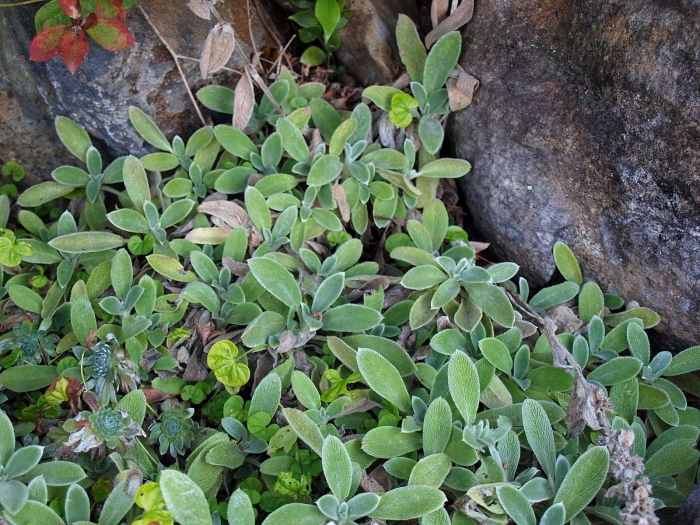Dwarf Lamb’s Ears
(Stachys thirkei)
Dwarf Lamb’s Ears (Stachys thirkei)
/
/

Batsv
CC BY-SA 4.0
Image By:
Batsv
Recorded By:
Copyright:
CC BY-SA 4.0
Copyright Notice:
Photo by: Batsv | License Type: CC BY-SA 4.0 | License URL: http://creativecommons.org/publicdomain/zero/1.0/deed.en | Uploader: Batsv | Publisher: Wikimedia Commons |















Estimated Native Range
Summary
Stachys thirkei, commonly known as Dwarf Lamb’s Ears, is an evergreen perennial herb native to rocky meadows and slopes in Southeastern Europe. It is a low-growing plant, typically reaching a height of 0.3 feet (0.09 meters) and spreading up to 1 foot (0.3 meters) wide. The plant forms a dense mat of soft, velvety, silver-green foliage that is highly tactile and visually appealing. During the summer months, Dwarf Lamb’s Ears produces spikes of small purple and pink flowers, which add a subtle splash of color to the garden and attract pollinators such as bees.
Dwarf Lamb’s Ears is valued for its ground-covering ability, textural foliage, and drought tolerance, making it an excellent choice for rock gardens, borders, and xeriscaping. It is also used in sensory gardens due to the softness of its leaves. This plant prefers full sun to part shade and thrives in well-drained soils. While it is generally low-maintenance, it can suffer from root rot if overwatered or planted in poorly drained soils. It is also susceptible to powdery mildew in humid conditions. To maintain a neat appearance and promote new growth, it is advisable to remove spent flower spikes after blooming.CC BY-SA 4.0
Dwarf Lamb’s Ears is valued for its ground-covering ability, textural foliage, and drought tolerance, making it an excellent choice for rock gardens, borders, and xeriscaping. It is also used in sensory gardens due to the softness of its leaves. This plant prefers full sun to part shade and thrives in well-drained soils. While it is generally low-maintenance, it can suffer from root rot if overwatered or planted in poorly drained soils. It is also susceptible to powdery mildew in humid conditions. To maintain a neat appearance and promote new growth, it is advisable to remove spent flower spikes after blooming.CC BY-SA 4.0
Plant Description
- Plant Type: Herb
- Height: 0.1-0.3 feet
- Width: 0.5-1 feet
- Growth Rate: Moderate
- Flower Color: Purple, Pink
- Flowering Season: Summer
- Leaf Retention: Evergreen
Growth Requirements
- Sun: Full Sun, Part Shade
- Water: Medium, High
- Drainage: Medium, Fast
Common Uses
Bee Garden, Bird Garden, Border Plant, Butterfly Garden, Deer Resistant, Drought Tolerant, Hummingbird Garden, Low Maintenance, Rabbit Resistant, Salt Tolerant
Natural Habitat
Rocky meadows and slopes in Southeastern Europe
Other Names
Common Names:
Scientific Names: , Stachys thirkei, Stachys janiana, Stachys thirkei var. condensata,
GBIF Accepted Name: Stachys thirkei K.Koch